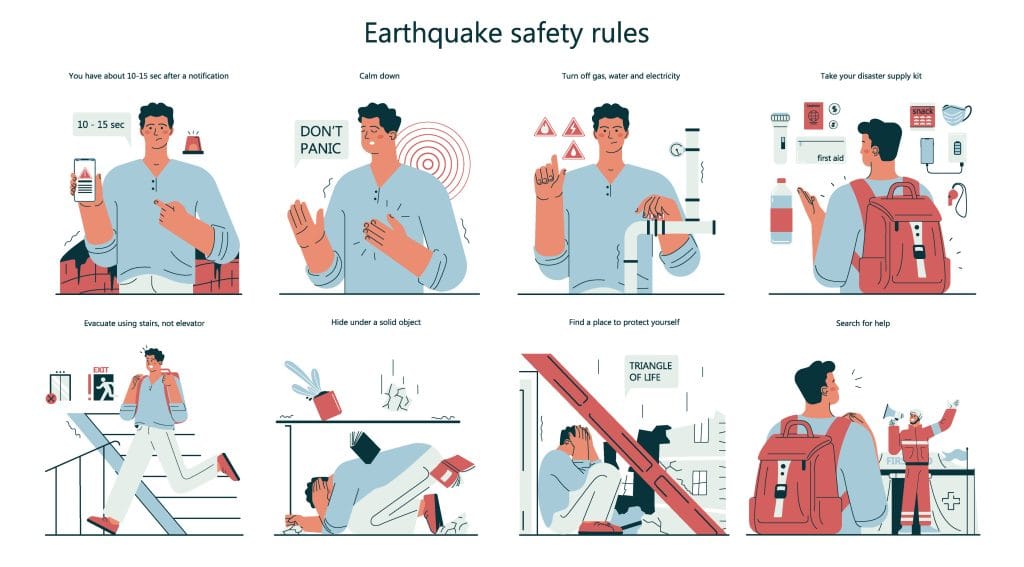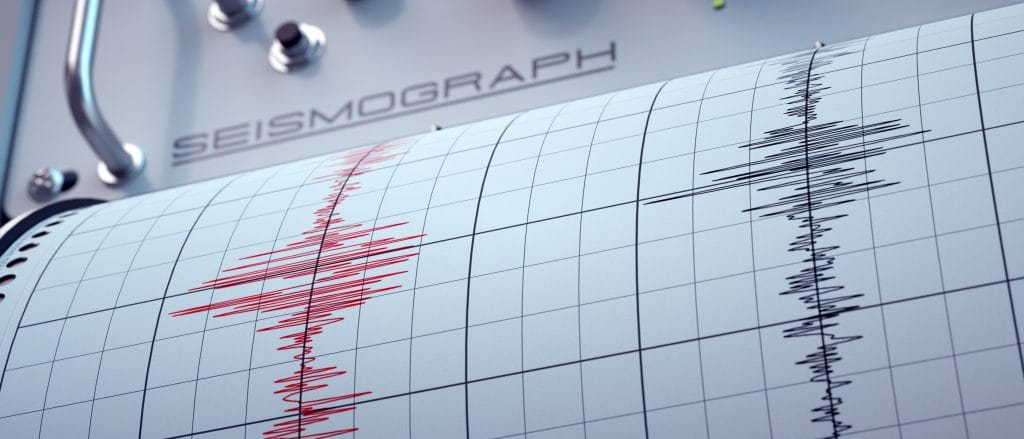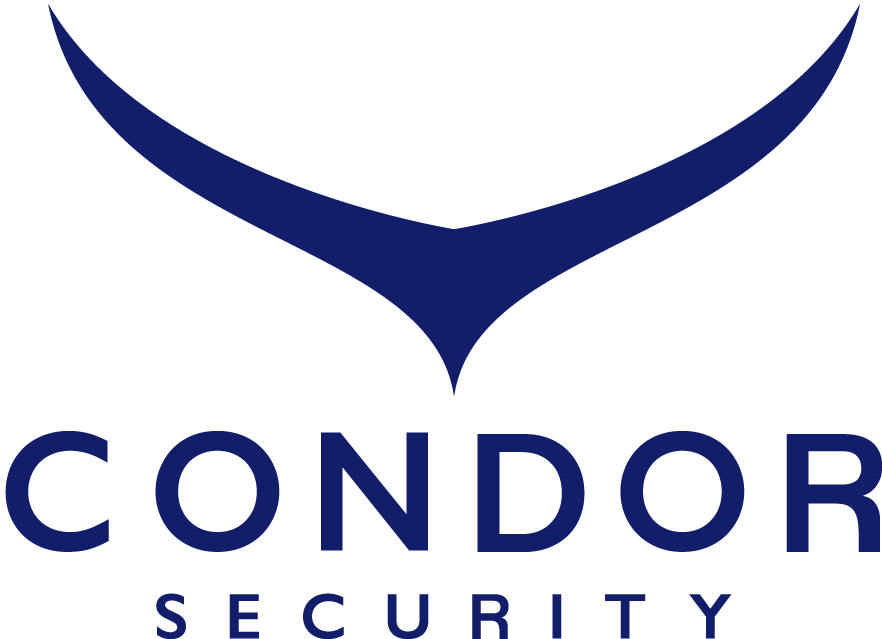Earthquake
Toronto may sit far from Canada’s most active fault zones, but a single jolt can still rattle the city’s skyline of glass and steel. When you live or work in a high‑rise condominium, preparation is more than peace of mind—it’s a professional responsibility to your neighbours and yourself. Below is a concise, action‑oriented guide—grounded in Public Safety Canada, the City of Toronto, and Ontario government resources—on how to prepare for, ride out, and recover from an earthquake in a Toronto high‑rise.

1 | Before the Ground Moves
Build a 72‑Hour Kit for Your Unit
Public Safety Canada recommends stocking enough essentials to be self‑sufficient for three days: water (2 L per person per day), non‑perishable food, first‑aid supplies, flashlight, batteries or power bank, whistle, copies of ID, cash, and extra keys. Store it someplace you can grab in the dark, such as a hall closet or under the bed. (getprepared.gc.ca)
Quake‑Proof Your Space
- Anchor bookcases, TVs, and mirrors to studs.
- Place heavy items on lower shelves and away from beds or couches.
- Use cabinet latches to keep dishes inside.
- Keep sturdy shoes and a flashlight beside your bed—broken glass on a dark floor is a hidden injury risk. (publications.gov.on.ca)
Know the Building Plan
Your condo board or property manager should maintain a written emergency plan covering:
- Floor‑by‑floor evacuation routes and two stairwells.
- Designated muster points outside the building.
- Roles for staff, wardens, and security.
- Backup power for elevators, lights, and life‑safety systems.
If the plan doesn’t exist, press to create one and schedule an annual drill—because in a crisis, muscle memory beats reading memory. (City of Toronto)
2 | When the Shaking Starts
Drop · Cover · Hold On
- Drop to hands and knees before you’re thrown down.
- Cover your head and neck under a sturdy table or next to an interior wall, away from windows or tall furniture.
- Hold On until the shaking stops. Buildings are engineered to sway; let them do their job while you do yours. (getprepared.gc.ca)
Do NOT rush for the stairs or elevators during the quake. Falls, jammed doors, and flying debris in crowded stairwells injure more people than the shaking itself. Stay put, stay low, stay covered.
If you’re in the parking garage or lobby, move away from glass and hanging fixtures; crouch beside an interior wall until the motion ends.
3 | Immediately After
Safety Scan
- Check yourself and others for injuries; apply first aid from your kit.
- Smell gas or hear running water? Evacuate the unit, pull the fire alarm, and report the hazard.
- Expect aftershocks—be ready to Drop, Cover, Hold On again.
Decide Whether to Evacuate
Leave the building only if:
- There is visible structural damage, fire, or flooding.
- Authorities or building management instruct evacuation.
Always use the stairs; elevators are unsafe until inspected. (publications.gov.on.ca)
Stay Informed
Tune a battery radio or phone (if networks are up) to local news and the City of Toronto’s official channels for instructions. NRCan’s Earthquakes Canada site posts real‑time updates once communications stabilize. (getprepared.gc.ca)
4 | Building Management’s Checklist
- Initiate a Rapid Assessment
- Send trained staff or a qualified engineer to inspect structural, electrical, and mechanical systems before restarting elevators.
- Communicate Early and Often
- Post lobby notices, email blasts, and PA announcements summarizing the situation, expected timelines, and contact points.
- Coordinate with First Responders
- Keep fire routes and loading docks clear for Toronto Fire and EMS.
- Document and Debrief
- Record damage, actions taken, and resident feedback to refine the emergency plan for next time.
Well‑drilled staff turn chaos into calm—an outcome residents remember long after the tremors fade.
Bonus: Tips for Property Managers
If you manage or represent a condo board, take proactive steps:
- Hold annual drills that include earthquake scenarios
- Review and update your emergency plan regularly
- Maintain backup power for elevators, lights, and communications
- Post clear instructions in common areas
- Train concierge and security staff in emergency response procedures
A prepared building is a resilient building — and residents notice.
5 | Resident Quick‑Reference Card
✅ Do
- Drop, Cover, Hold On
- Keep shoes & flashlight by the bed
- Grab your 72‑hour kit if safe
- Follow posted instructions and drills
❌ Don’t
- Run to elevators or balconies Simplicity saves seconds, and seconds save lives.
- Use candles or lighters
- Assume the building is “cleared” without official word
- Flood 9‑1‑1 with non‑urgent calls
Post this table on the back of your unit door. Simplicity saves seconds, and seconds save lives.
Final Word: Ready Beats Lucky
At Condor Security, we measure preparedness by performance under pressure. Earthquakes in Toronto are infrequent, but their timing is famously inconvenient. Invest a few focused hours now—anchoring shelves, assembling kits, rehearsing plans—and you trade uncertainty for confidence.
If you’re a condo board or property manager needing a bespoke emergency program, our specialists can help audit, design, and drill a plan that meets code, calms residents, and keeps risk to a minimum. Because when the ground shakes, the last thing you want is shaky leadership.
Stay safe, stay ready, and let’s keep Toronto’s skyline resilient—one condominium at a time.

Sources
City of Toronto – “Get Emergency Ready” Guide (City of Toronto)
Public Safety Canada – “Earthquakes: What to Do?” and “Your Emergency Preparedness Guide” (getprepared.gc.ca, getprepared.gc.ca)
Ontario Ministry of the Solicitor General – “High‑Rise Emergency Preparedness” (publications.gov.on.ca)
Natural Resources Canada – Earthquake Early Warning Program (getprepared.gc.ca)

Condor Security Employee of the Month August 2025
Condor Security is proud to recognize Deepinder Bhatt as our Employee of the Month for August 2025. From the moment he joined the team, Deepinder has demonstrated professionalism, reliability, and a genuine commitment to customer service.
